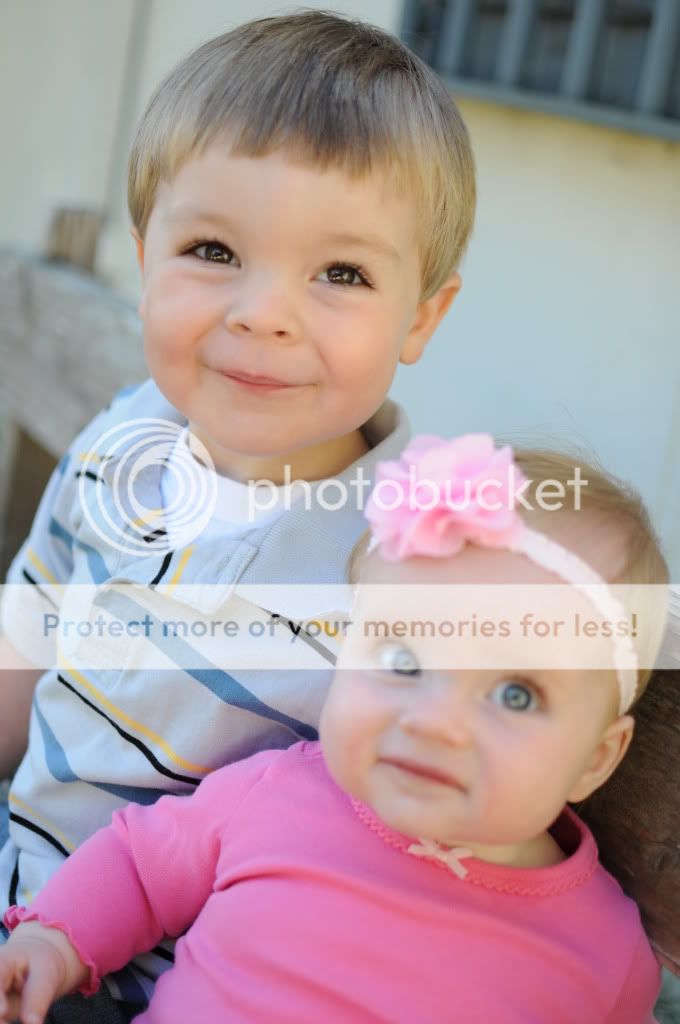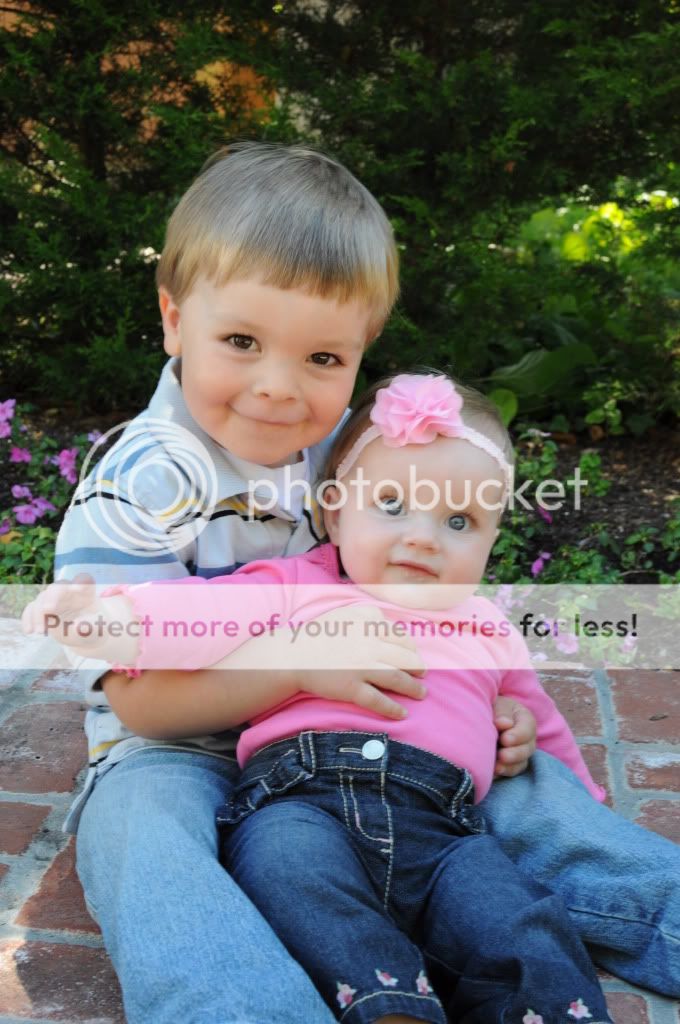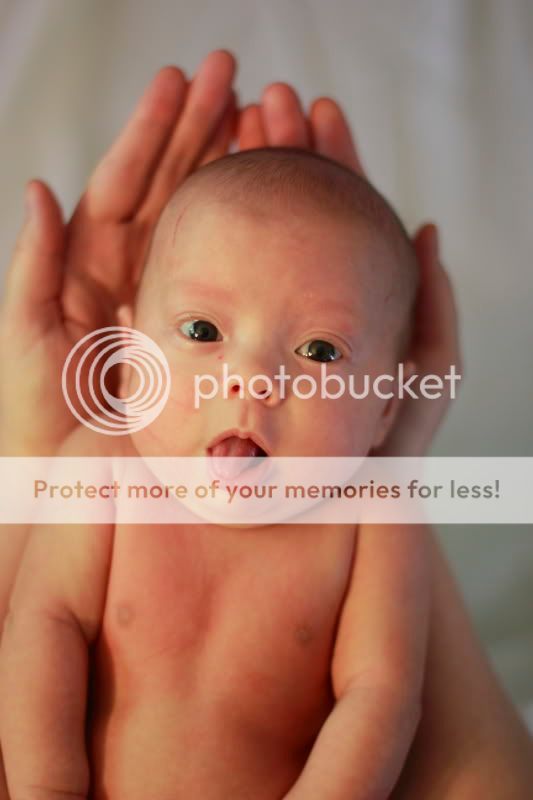McMommy
TPF Noob!
- Joined
- Apr 8, 2010
- Messages
- 168
- Reaction score
- 1
- Location
- Seaside, Ca
- Can others edit my Photos
- Photos OK to edit
My challenge lately has been getting everyone in the photo in focus. Usually it's siblings together in a photo, and usually I'm in pretty close. I realized that it happened when I had my lens all the way open and tried to correct it by stopping up a bunch, from 1.8 to about 7-10. But then to increase the lighting, I have to lower my shutter speed, and this is all in daylight/shaded areas with my ISO at about 400. I don't understand what I'm doing wrong, but either I can get good lighting, sharp subjects, but only 1 of 2 in focus, or I get everybody blurry because the lighting isn't right.
What would help me fix this? These were taken at about 8:30am in a garden with high walls, in a shady area. I've had no problems taking photos of individual people there before in this lighting, only with multiple subjects in the photo.
First missed photo:
f/1.8, 1/1000 sec., ISO 250, center-weighted metering mode, no flash

Second missed photo:
f/8, 1/40 sec., ISO 250, center-weighted, no flash

Now that I've written out, I see that I didn't adjust the ISO (like I thought I had) and that's probably my problem. What can I safely adjust ISO to when shooting in shade like this, without getting lots of noise? I tried a few with flash but it made the background look really unnatural and I don't have an off-camera flash yet, and can't get one soon. So I think the problem is ISO, but not sure exactly what small improvements I can make for that. The problem is that when I have 2 cute kids sitting pretty, I shoot first and ask questions later, adjusting what I can possibly think of quickly, and then learning from hindsight!
Thanks!!
What would help me fix this? These were taken at about 8:30am in a garden with high walls, in a shady area. I've had no problems taking photos of individual people there before in this lighting, only with multiple subjects in the photo.
First missed photo:
f/1.8, 1/1000 sec., ISO 250, center-weighted metering mode, no flash

Second missed photo:
f/8, 1/40 sec., ISO 250, center-weighted, no flash

Now that I've written out, I see that I didn't adjust the ISO (like I thought I had) and that's probably my problem. What can I safely adjust ISO to when shooting in shade like this, without getting lots of noise? I tried a few with flash but it made the background look really unnatural and I don't have an off-camera flash yet, and can't get one soon. So I think the problem is ISO, but not sure exactly what small improvements I can make for that. The problem is that when I have 2 cute kids sitting pretty, I shoot first and ask questions later, adjusting what I can possibly think of quickly, and then learning from hindsight!
Thanks!!








![[No title]](/data/xfmg/thumbnail/31/31756-ed344608f5fc9a69ff1d67dc7d03161c.jpg?1734160479)
![[No title]](/data/xfmg/thumbnail/37/37606-3c9ffb5906173fa2aa489341967e1468.jpg?1734170733)
![[No title]](/data/xfmg/thumbnail/37/37605-90c8efaef5b7d1f52d4bf8e7dfd33673.jpg?1734170732)


